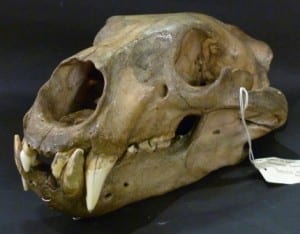Specimen of the Week: Week Eleven
By Emma-Louise Nicholls, on 26 December 2011
 Welcome to the final specimen of the week of the year 2011! I hope you that you had a fantastically wonderful weekend, whether it was full of Christmassy activities or alternate entertainment. I for one ate too much Christmas pudding (as I do every year) and spent the afternoon playing with my hamster’s new toys. It was his first Christmas and he was very excited to open his own presents. Whether Christmas is celebrated in your household or not, this time of year is certainly one thing for everybody (at least in this country) and that- is COLD! So this week’s specimen of the week is a creature from a cold climate and one that is as at home on land as it is in the sea. This week’s Specimen of the Week is:
Welcome to the final specimen of the week of the year 2011! I hope you that you had a fantastically wonderful weekend, whether it was full of Christmassy activities or alternate entertainment. I for one ate too much Christmas pudding (as I do every year) and spent the afternoon playing with my hamster’s new toys. It was his first Christmas and he was very excited to open his own presents. Whether Christmas is celebrated in your household or not, this time of year is certainly one thing for everybody (at least in this country) and that- is COLD! So this week’s specimen of the week is a creature from a cold climate and one that is as at home on land as it is in the sea. This week’s Specimen of the Week is:
**!!!THE POLAR BEAR!!!**
Five particularly pertinent polar bear points are hereby presented:
1) Polar bears are all white and subsequently famous for being well camouflaged in the Arctic. However underneath their fur, their skin is actually black.
2) Polar bears are officially classified as ‘marine mammals’ in the United States of America. They have huge forepaws which they use like paddles when swimming.
3) Polar bears are so closely related to grizzly bears that it is not unheard of for them to mate in the wild. A hybrid of a polar bear and a grizzly bear is called a pizzly bear. No I’m not making that up.
4) Polar bears are the largest land carnivore alive today.
5) Polar bears have the ability to detect prey nearly a kilometre away using their excellent sense of smell. They can also smell prey that is up to a metre below the compacted snow.
Read a fascinating debate in a previous blog by our curator, about polar bears in the recent documentary Frozen Planet.
A happy holiday season to one and all from everyone; two legs, four legs, and no legs at all, at the Grant Museum!
 Close
Close




